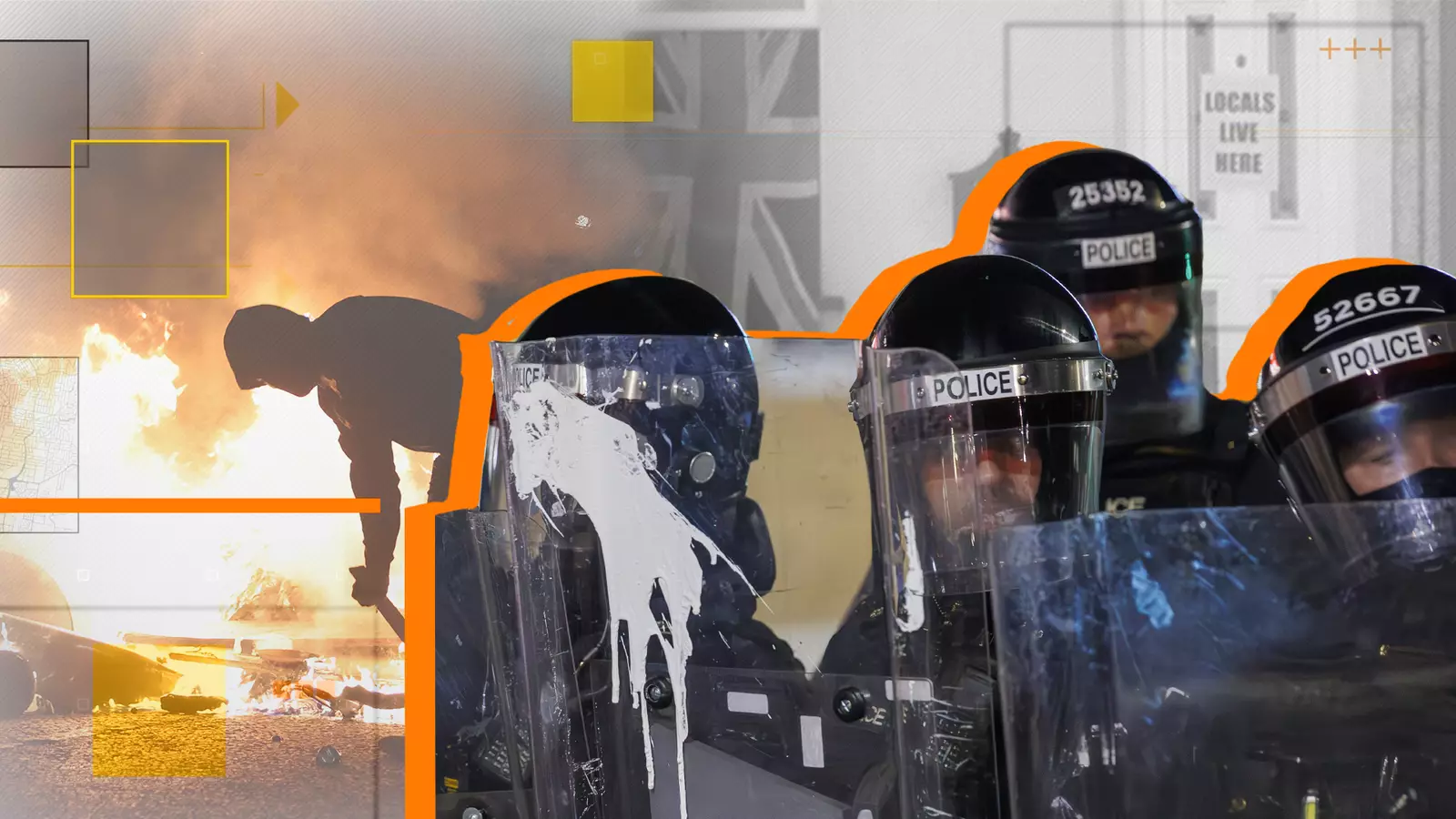Northern Ireland finds itself engulfed in a wave of violence that has escalated over five consecutive nights, primarily centered around Ballymena. This turmoil erupted following a brutal sexual assault on a teenage girl on June 7, an incident that should have galvanized community empathy but instead ignited a firestorm of unrest. Two fourteen-year-old boys were arrested and charged, using a Romanian interpreter to plead not guilty in court, fueling an already brewing storm. However, the aftermath turned tragic as calls for peaceful protest were twisted into a frenzy of riots and confrontations with law enforcement. This tragic spiral was a direct reflection of deeper societal insecurities, exacerbated by rapid demographic changes in the town.
Sowing Seeds of Fear
Prior to the June 7 incident, subtle tensions had already been bubbling beneath the surface of Ballymena, a town that has seen a demographic shift that many residents feel unprepared to handle. Just days before the sexual assault, police reported another case involving a young girl. Following this, media outlets began to highlight descriptions of the alleged assailants, emphasizing their “foreign” backgrounds and stoking existing fears. The way the media portrayed these events created an environment ripe for manipulation by far-right figures, who swiftly seized the opportunity to push anti-immigration rhetoric and rally those harboring resentment.
This societal anxiety was exacerbated by a stark revelation in census data: Ballymena had experienced a more dramatic increase in non-English speakers than any other locality in Northern Ireland. With a recent census revealing that nearly 30% of residents in central Ballymena spoke a language other than English, it’s evident why the community’s cultural landscape has dramatically shifted. This seismic change, so foundational in shaping collective identity, has bred distrust, suspicion, and ultimately, violence—a tragic caricature of human behavior under pressure.
The Firebrand of Social Media
The role of social media in escalating this situation cannot be overstated. While the platforms are intended for community engagement, they have also become breeding grounds for hate and misinformation. Before the chaos began, a rising tide of posts related to Ballymena was heralded by a far-right news aggregator, signaling to extremists that the town was primed for unrest.
On June 8, the day after the arrests were made, mentions of Ballymena exploded from 142 to a staggering 10,300. This surge of online chatter included an overwhelming wave of negative sentiment targeting migrants, with 39,000 posts mentioning “migrants” between June 7-12, 95% of which were seemingly derogatory. This was not merely an organic outpouring; it was a calculated effort, with known hate figures amplifying their reach to an alarming degree. The implications are clear: Social media amplifies not just voices of dissent but also fuels flames of anger and mobilization among disenchanted populations.
The Reality of a Divided Community
Amidst the riots, one cannot ignore the heart-wrenching testimonies from the immigrant population in Ballymena, who now find themselves living in a veritable state of siege. Bulgarian nationals have openly expressed their fears of stepping outside, haunted by the specter of violence that threatens their safety. As political figures like Jim Allister lament the unrest, they must also face the uncomfortable reality: the underlying currents of resentment surrounding immigration cannot be brushed aside as mere byproducts of the violence.
It is imperative to recognize that while the violence cannot be justified, the feelings of disenfranchisement and fear among long-time residents must be acknowledged. Ballymena, shaped by decades of socio-economic challenges, is at a critical juncture. The interactions between local citizens and newcomers have become fraught with tension—a recipe for disaster, fueled by misinformation and societal anxieties.
Responses and Consequences
The police response to the growing unrest has been equally troubling, leading to arrests, injuries, and increasing divisions within the community. The deployment of rubber bullets and water cannons against rioters has only managed to escalate the violence, rather than calming it. As officers from England and Wales were called in, the message appeared clear: the local police alone could not control this incident, reflecting a deeper malfunction in addressing community grievances.
In the quest for local authorities and politicians to label these riots as mere acts of “racist thuggery,” they risk alienating the genuine concerns of the wider populace. Such refusals to engage with the actual motivations behind the violence only serve to perpetuate a cycle of misunderstanding and conflict. Without meaningful dialogue, the repeated cycle of violence will only lay the groundwork for further disgrace as the town grapples with its identity, safety, and sense of belonging in this new reality.
Ballymena’s tragic situation is a manifestation of unresolved societal fears and the impact of swift demographic changes, proving that densely interconnected communities can become unmoored in moments of crisis. The once-quiet town is now a battleground for ideologies, a testament to how quickly perceived threats can spiral into chaos when left unchecked.



Leave a Reply